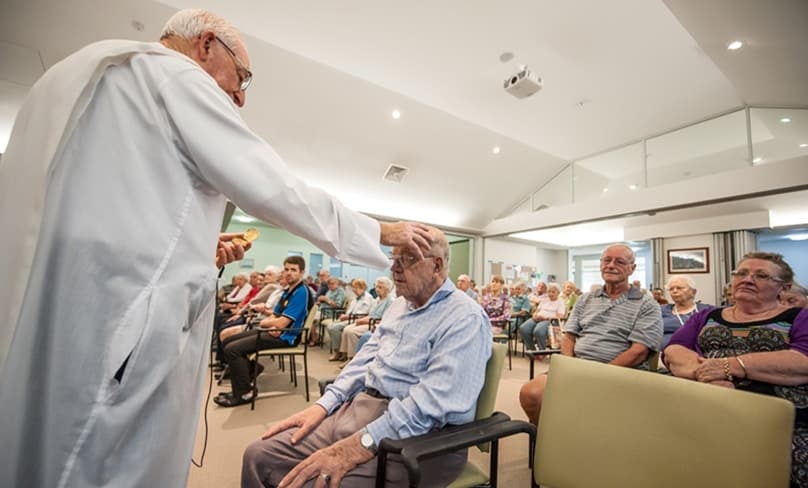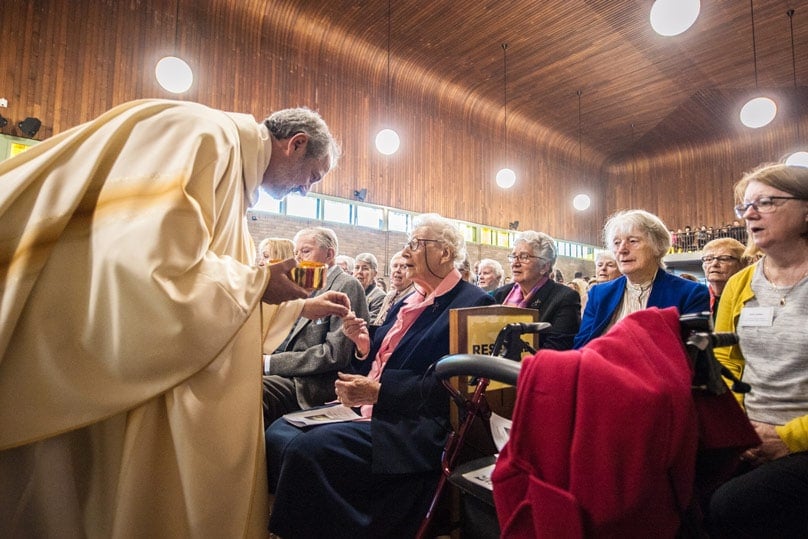
The Catholic Church in Australia is in the middle of a Plenary Council process. So far, it’s produced easily predictable patterns of responses: those who want what they can’t have, versus those who want their patrimony back.
How do you measure how well the Church is doing its job? Ultimately only God can do that.
Measuring the number of people employed by the Church or enrolled in Catholic schools means very little. There are incentives for working for the Church (salary) or attending a Catholic school (good grades).
Measuring the number of people helped by its charities simply measures the number of people out there that need help.
Around 90 per cent of Australian Catholics believe that attending Mass on Sundays – the core worship requirement of every Catholic – gives them nothing in return. That’s why they aren’t there.
Yet if we wanted to measure anything from the outside, the single best indicator of how well the Church is delivering its core business is the Mass attendance rate. Of our approximately 600,000 practising Catholics in Australia, around two-thirds of them are over 60 years of age.
This got me wondering about the declining rate of Mass attendance that we note every five years.
Is this jaded young people voting with their feet? Is this angry adults leaving because of the abuse crisis? Or is there something else going on?
We don’t really know, because no one has been morbid enough to look at Australian death rates for the over-60s and do the math.
That is, until now.
Unless the Plenary Council can find a way of stopping people dying, the rate of practising Catholics in Australia will continue in freefall.
I ran the numbers on how many Australians die each year over the age of 60 and worked out how many of them were likely to identify as Catholic, based on the census rates.
Then I used the age-specific Mass attendance rates to work out how many of those over-60s were probably practising Catholics.
The results were telling. Between 1996 and 2001, the Church in Australia lost just over 100,000 practising Catholics, and just under half of those were probably our over-60s dying.
As I kept going, my estimated death rate began to occupy more and more of the missing numbers, until by 2016 it was almost 100 per cent.
Some people may still be voluntarily leaving, but the Church in Australia’s biggest losses right now are those caused by the inevitable death of our biggest group of practising Catholics: the parents of the Boomers. This generation – born before 1946 – was a remarkably faithful group of people in terms of attending Mass.

In 2024, the last of the Boomer generation – those born in 1964, who grew up in the post-conciliar Church – will turn 60.
But by 2049, the Boomer Catholics will be almost all gone. That’s just 30 years – one generation away.
If everyone who’s currently going to Mass now keeps going, by 2049 we will have barely 250,000 practising Catholics in the whole of Australia.
Nothing short of a miraculous fertility explosion – or a great sign appearing in the heavens that scares our lapsed brothers and sisters back into church – can reverse this trend.
Mass immigration of practising Catholics only solves the problem for around one generation, as the next generation inevitably begins to lapse under the influence of high living and poor catechesis.
We know that to maintain our current national population, each woman needs to produce around three children.
It’s the same in the Church. Each practising Catholic has to produce at least 3 new practising Catholics just to keep our numbers stable. But this hasn’t been happening.
Since 1968, families have been much, much smaller. Smaller families normally wouldn’t be a problem if all the children practised their faith, and then raised their children to do so as well.
But in Australia, this hasn’t happened. Almost none of the Boomers’ adult children practice, and nor do their grandchildren. The rate of adult conversions is also a trickle.
So what about our priest-to-Catholic ratio? I worked out that if no new priests were ordained or imported between now and 2049, we’d still have around 1,200 of them left.
Thankfully in 2049 we will have (on current trends) only a quarter of a million practising Catholics to whom they must minister. That’s one priest for around every 200 practising Catholics – pretty much the same rate we have now.
But the real question is: what will the Church in Australia look like once the Boomers are gone?
Who will remain? And what will they believe?
